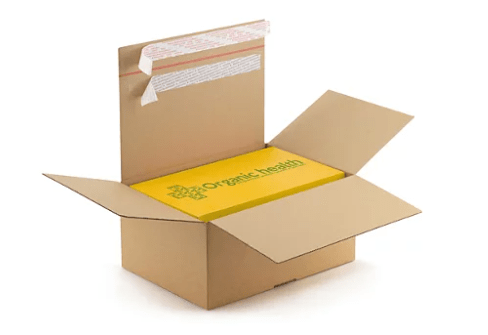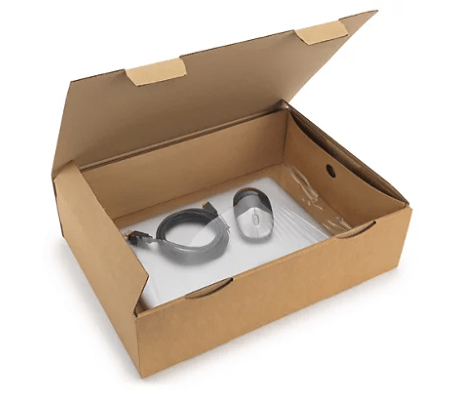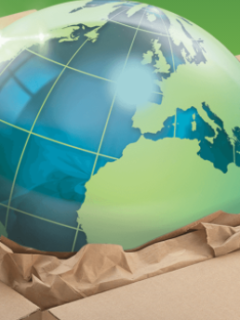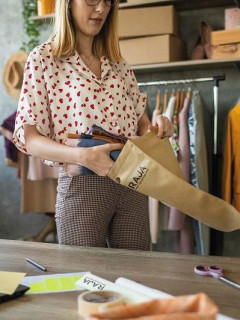Returns are a major challenge for online retailers. According to a European consumer survey, returns are a major factor affecting customer satisfaction, with 46% of consumers always looking at the returns policy before making a purchase. For online retailers, offering a poor experience means a low conversion rate.
A Forbes survey found that 89% of consumers say returns can be cumbersome, so it’s important to work to counteract this perception.
Key figures on returns in online shopping
The Forbes survey also shows that logistics is becoming an increasingly important sector of the European economy. To compete successfully in the marketplace, online retailers need to become more efficient throughout the value chain. From purchase to return, it is necessary to offer a flawless customer experience.
Online shopping continues to grow in Europe
In 2021, Fevad (the French e-commerce industry organisation) reported that European e-commerce had grown by 13%, with the market reaching €718 billion. In France, this continued to increase in 2022 by a further 14%. According to Fevad, 2.3 billion online purchases with an average shopping basket of around €65 were recorded in 2022.
Return order rates by European country
Statista has compiled statistics on the proportion of customers who have returned a product they have ordered online:
- Germany: 51 % ;
- In Switzerland: 51 %;
- In Spain: 42 %;
- In Italy: 39 %;
- France: 39 %.
Returns: a significant environmental impact
In the e-commerce context, goods are often transported by several different modes of transport. Products make an initial journey from the point of production to the warehouse. During this journey, they may be transported by plane, boat or lorry. The final leg of the journey, to consumers, is usually by road.
When the products are sent back, they take another journey. In many cases, this is similar in nature and duration to the first journey. However, it can be longer, especially if the online retailer chooses to send the returned products to a third-party platform. There they are checked before being returned to the original warehouse. In this case, the greenhouse gas (GHG) emissions associated with transport are doubled.
According to an estimate by The Good Goods, a product ordered online and returned can have up to 2.3 times the environmental impact of a non-returned item.
What are the key solutions to improve the customer experience and thus increase profitability?
Here’s some advice on solutions for online retailers to ensure a great customer experience:
1. Clear and transparent return conditions
For 48% of consumers, an easy return option is one of the key criteria when choosing an online store. To stand out from other online retailers, it’s important to be transparent about costs. Make sure you specify the costs in the return conditions. The cost may vary depending on the reason for the return.
2. Quick and easy
Do everything possible to make the process of returning a product quick and easy. Feel free to send ready-made return labels to customers enclosed in the shipment. Alternatively, you can provide a QR code for returns.
A piece of advice from RAJA: Take the opportunity to ask customers to state the reason for the return. This can provide good input on how the online store can improve the quality of its services.
3. Fast refund to the customer
Although European legislation requires refunds within 14 days, it’s a good idea to refund even sooner. Figures from sendcloud show that most consumers expect to get their money back within 4-5 days.
4. Enough time
It’s also worth noting that extending the return period increases conversions. 44% of consumers would not place an order if there was no 30-day return option. This number drops to 30% for a period of less than 60 days. Several online retailers, such as Clas Ohlson, allow returns for as long as 365 days.
The key points of the return policy for consumers:
- Return costs: 57 %
- Finished return labels: 50 %
- Refund time: 43%
- Online return form: 39 %
- Return period: 39 %
Smart parcel lockers/ parcel boxes
Smart, online parcel lockers simplify the receipt and return of orders. These can be found all over the country and are often located in shopping centres, by public transport or in central locations. Smart parcel lockers allow customers to collect their parcels close to where they live or travel, and at any time of day or night. Parcel lockers can also contribute to more environmentally friendly distribution than other delivery methods. By 2024, Statista expects the size of this market to exceed USD 1 billion.
The pay-for-return trend
A key ecommerce trend in 2023 is the pay-for-return trend. Online retailers like Decathlon are making their customers pay for returns, with 25% of consumers saying they are willing to pay to return products.
For brands, the aim is to cover their real costs, but also to stem the tide of customer returns. 81% of European online shoppers regularly return an item if they are not satisfied. As a result, online retailers have struggled to manage returns for years. By limiting the number of returns, they hope to reduce their carbon footprint and counteract the negative impact on their environmental efforts.
RAJA, your partner for optimising returns
RAJA has a wide range of e-commerce packaging, and our teams have a high level of expertise in how to facilitate good returns management. Feel free to contact us for advice and guidance on how to manage returns, improve customer experience and introduce eco-friendly packaging options.
Some examples of solutions we recommend:
Returnable packaging
Returnable packaging is a very practical solution to simplify the return of goods. Returnable packaging is available in both boxes and bags, and is equipped with:
- A first adhesive strip on the outside. This is used by the order picker to pack the product before shipping.
- A second adhesive strip on the inside of the pack. This is the return tape to be used by the customer.
- Between the two adhesive strips there is a tear-off edge, which allows the customer to easily open the parcel without scissors or a knife.
See RAJA’s e-commerce bags with double ad hesive strip and boxes with double adhesive strip

Solutions for parcel fulfilment and protection
To limit the number of returns of damaged parcels and ensure safe transport of your goods, we recommend using kraft paper packaging fill, which is an environmentally friendly alternative. Another good option is bubble wrap, either made of paper or recycled plastic.
For additional security, you can also choose packaging with integrated protection. Protective cardboard boxes make it easy to send fragile products that need extra protection. Protective boxes are available in several formats to suit different types of goods, such as mobile phones and electronics.

Summarising
The 3 most important mnemonics about returns:
- For online retailers, returns have a financial cost, but also an environmental cost
- To optimise return conditions and give customers a good shopping experience in your online store, it’s important to be clear and concise
- Packaging can help online retailers simplify the handling of returns while reducing the number of damaged parcels














